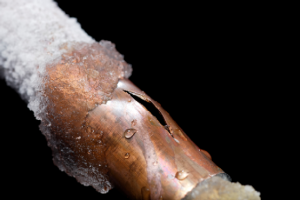Six Ways Your Plumbing Tells You There Is a Problem
 Your plumbing is one of the most important systems in your home, necessary for your comfort. When it is working properly, you barely think about it and life’s a breeze. When it’s not, it can be a horrible trial. The good thing is your normally quiet plumbing will often let you know something is wrong by making a variety of noises. In fact, you can sometimes pinpoint the exact plumbing problem just by listening closely. Here are some ways your pipes can tell you that you need to call a plumber:
Your plumbing is one of the most important systems in your home, necessary for your comfort. When it is working properly, you barely think about it and life’s a breeze. When it’s not, it can be a horrible trial. The good thing is your normally quiet plumbing will often let you know something is wrong by making a variety of noises. In fact, you can sometimes pinpoint the exact plumbing problem just by listening closely. Here are some ways your pipes can tell you that you need to call a plumber:
1. A huge clunking when you turn off the tap – Often referred to as “water hammer,” and usually accompanied by some vibration, this noise happens because rushing water hits a quickly closing valve and comes to a sudden stop. Valves are made to close slowly and air chambers are added to critical areas like the clothes washer so this thudding doesn’t happen. However, sometimes gaskets, etc. corrode and valves begin to shut quickly or the air chambers get filled with water. The problem begins as just an annoyance, but can lead to damaged joints and connections.
2. A general whooshing noise – Instead of being nicely quiet when nothing is running, you hear the noise of running water. Check the toilets, check your sinks, if nothing is on that means water is running through the pipes without a normal outlet. You may have a leak in a sewer line or inbound line. In addition to a large water bill, his can lead to huge amounts of damage both inside your home and out. A licensed plumber has all sorts of ways to detect the problem; many can use a special video camera that snakes through the pipes to literally see any damage.
3. Rattling – When you are running a tap, flushing a toilet, or using water in any way, a rattling occurs. Generally, this means a pipe has broken – or loosened – its mounting strap. It’s a relatively easy fix as long as you don’t have to go through a wall, and worth it to prevent damage to the pipe.
4. Squealing – A high pitched “eeeeee” will usually happen when water must go very quickly from a large opening into a smaller one; it’s called cavitation. A lot of times, this occurs when you flush the toilet, indicating that you need to change the flush valve.
5. Chattering – Among other items, pumps and washing machines that are improperly connected can cause your pipes to vibrate. Proper reconnection can stop the vibration transfer that causes that annoying noise.
6. Dripping – Who hasn’t encountered a drippy faucet? It doesn’t take long to recognize the tell-tale sound of a leak. Just be sure not to ignore it. The dripping of a faucet, loose joint or cracked pipe may sound minor, but it can lead to major damage. Dismissing that dripping noise can drive up your water bill and cause significant damage to walls, cabinets, floors, etc. through rot and mold. Plus, all that mold can lead to major health problems if inhaled.
These are just a few of the ways your plumbing can communicate a problem to you through sound. Unfortunately, the causes of such noises are not set in stone; these are the more common reasons for crazy communication from your pipes. Calling a professional plumber is the best way to determine what type of fix is needed for your chatty plumbing. Don’t waste time trying to ignore these signs; you could end up with far worse problems than a rattling pipe if you leave it to chance.
Whatever happens, do not give into frustration; just restart if the job fails and try again. Thankfully, you should not have to go through this again for at least a few years…


